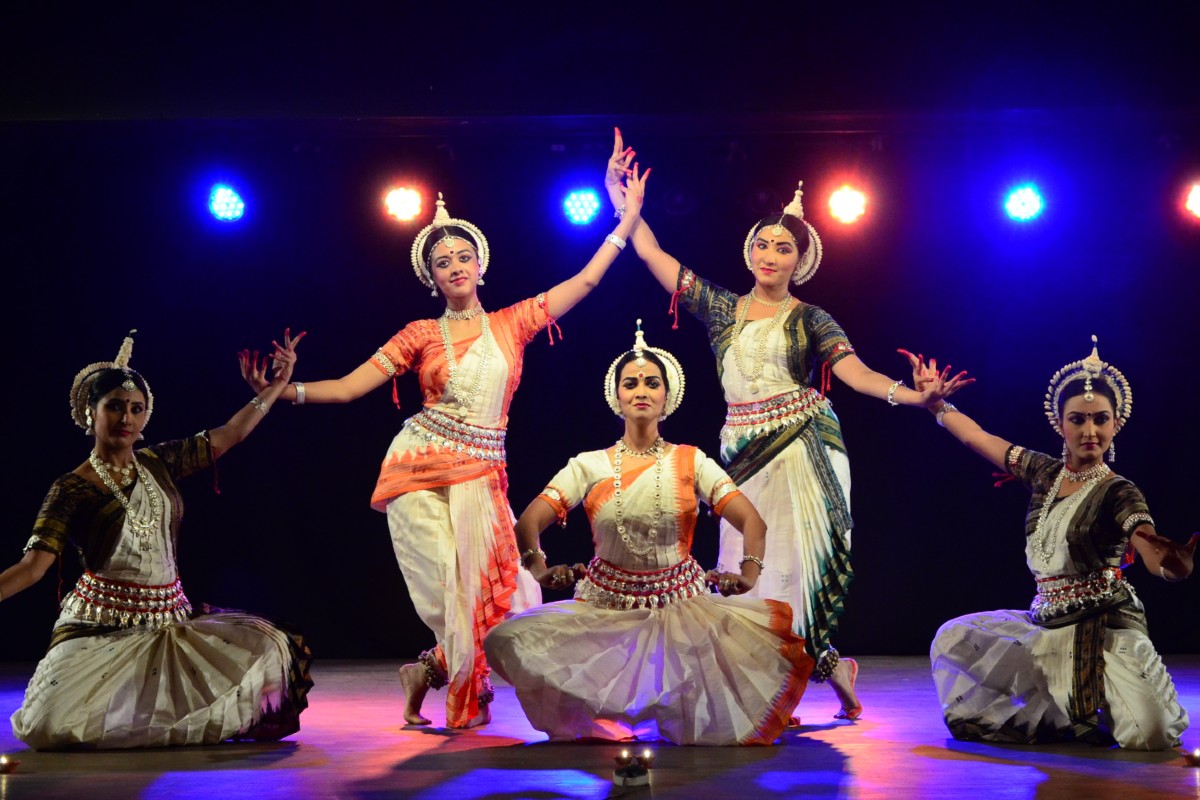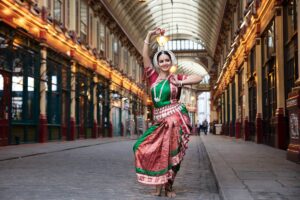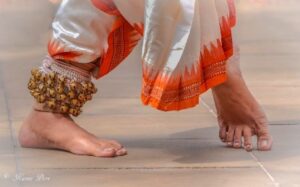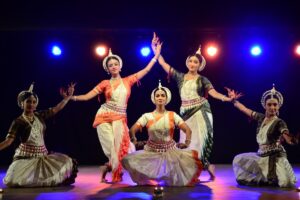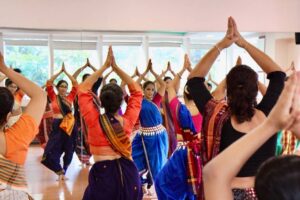India has a rich and diverse cultural heritage, and this is reflected in its classical dance forms, which have evolved over centuries and are an important part of India’s cultural and artistic traditions. These dance forms are characterized by their intricate footwork, elaborate costumes, expressive facial and hand gestures, and the use of classical music and poetry. Indian classical dance has evolved over the centuries and has been influenced by various regional styles, cultural traditions, and religious practices. Here is a brief overview of some of the main classical Indian dance forms:
- Bharatanatyam: Bharatanatyam originated in the southern Indian state of Tamil Nadu and is one of the oldest and most widely performed classical dance forms in India. It is known for its sharp, angular movements, intricate footwork, and elaborate hand gestures or mudras. Bharatanatyam often tells stories from Hindu mythology and is accompanied by Carnatic music, which is a classical music genre from South India. The dance is performed by both men and women and is often characterized by the dancer’s ability to maintain perfect balance and rhythm.
- Kathak: Kathak originated in northern India and is known for its fast footwork, intricate spins, and rhythmic patterns. It was originally performed by traveling bards, who would tell stories through dance and music. Kathak has been heavily influenced by Islamic culture and is characterized by its graceful hand movements and facial expressions. It is often accompanied by Hindustani classical music, which is a classical music genre from North India. Kathak is performed by both men and women, and the dancers often wear elaborate costumes and jewelry.
- Odissi: This dance form originated in the state of Odisha in eastern India and is known for its grace, precision, and expressive nature, as well as its intricate hand and eye movements and distinctive sculpturesque poses, which are inspired by the ancient temple carvings of Odisha. It is typically performed to classical Indian music and tells stories from Hindu mythology, including the love stories of Radha and Krishna, and the legends of the Hindu gods and goddesses.
- Kuchipudi: Kuchipudi is a classical dance form that originated in the Indian state of Andhra Pradesh. It is known for its fast footwork, fluid body movements, and graceful hand gestures. Kuchipudi often tells stories from Hindu mythology and is characterized by its use of music, dance, and drama. The dance is performed by both men and women, and the dancers often wear vibrant costumes and jewelry. Kuchipudi is accompanied by Carnatic music, which is a classical music genre from South India.
- Kathakali: This dance form originated in the state of Kerala in southern India and is known for its elaborate costumes, expressive hand gestures and facial expressions, and rhythmic footwork. It is typically performed to classical Indian music and tells stories from Hindu mythology, including the epics the Ramayana and the Mahabharata. The dancers wear heavy makeup and costumes, and the dance is accompanied by traditional percussion instruments.
- Sattriya: This dance form originated in the state of Assam in northeastern India and is known for its expressive hand gestures and facial expressions, as well as its rhythmic footwork and intricate patterns. It is typically performed to classical Indian music and tells stories from Hindu mythology, including the love stories of Radha and Krishna. Sattriya is accompanied by traditional music, which features unique instruments like the khol and the taal.
- Manipuri: Manipuri is a classical dance form that originated in the northeastern Indian state of Manipur. It is known for its gentle and fluid movements, which are inspired by the natural beauty of the region. Manipuri often tells stories from Hindu mythology and is characterized by its use of poetry, music, and dance. The dance is performed by both men and women, and the dancers often wear colorful costumes and jewelry. Manipuri is accompanied by classical music, which features unique instruments like the pung and the pena..
- Mohiniyattam: Mohiniyattam is a classical dance form that originated in the southern Indian state of Kerala. It is known for its graceful and fluid movements, which are inspired by the natural beauty of the region. Mohiniyattam often tells stories from Hindu mythology and is characterized by its use of music, dance, and poetry. The dance is performed by women, and the dancers often wear white and gold costumes, along with traditional jewelry. Mohiniyattam is accompanied by classical music, which features unique instruments like the mridangam and the veena..

